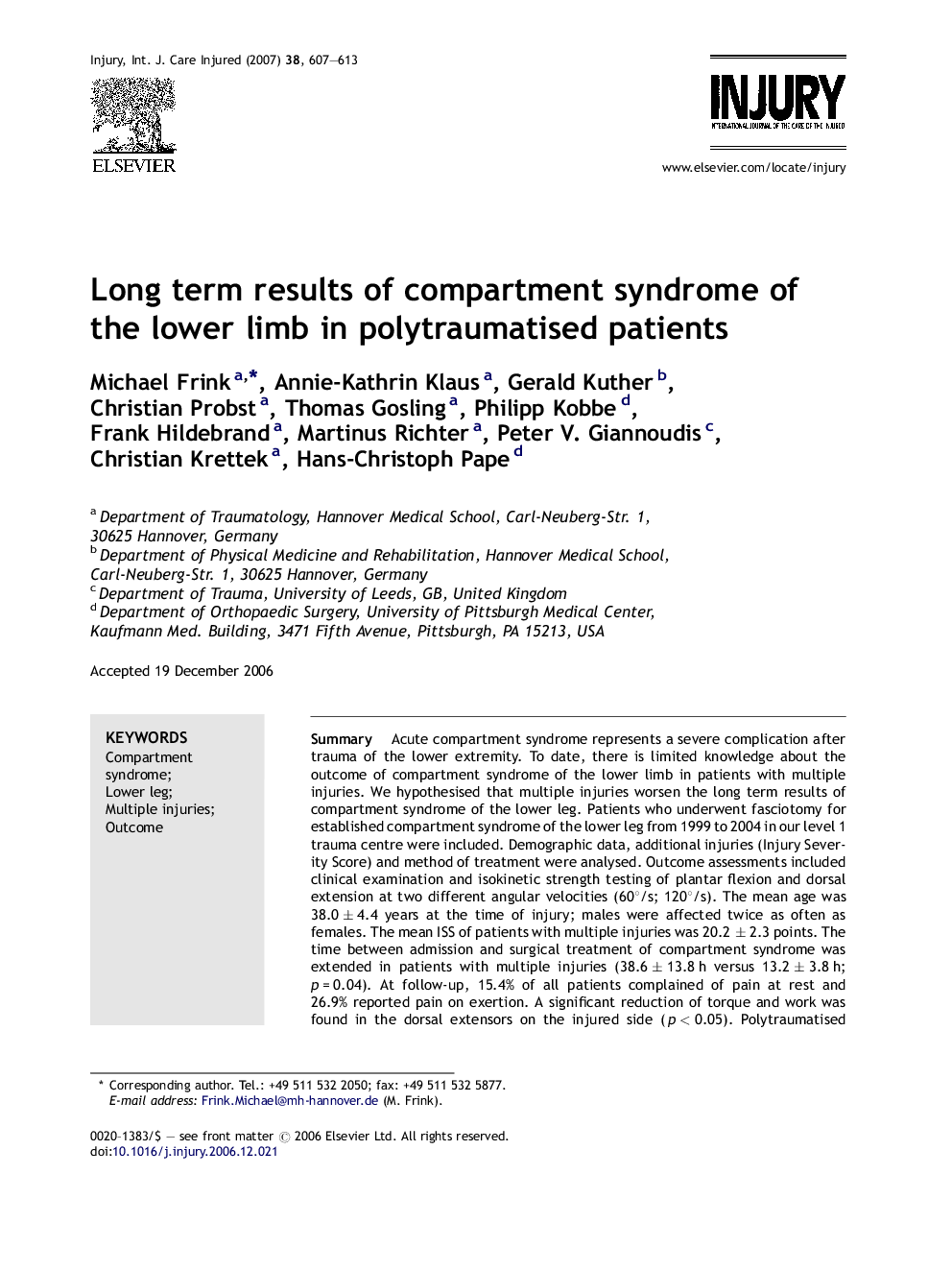| Article ID | Journal | Published Year | Pages | File Type |
|---|---|---|---|---|
| 3242269 | Injury | 2007 | 7 Pages |
SummaryAcute compartment syndrome represents a severe complication after trauma of the lower extremity. To date, there is limited knowledge about the outcome of compartment syndrome of the lower limb in patients with multiple injuries. We hypothesised that multiple injuries worsen the long term results of compartment syndrome of the lower leg. Patients who underwent fasciotomy for established compartment syndrome of the lower leg from 1999 to 2004 in our level 1 trauma centre were included. Demographic data, additional injuries (Injury Severity Score) and method of treatment were analysed. Outcome assessments included clinical examination and isokinetic strength testing of plantar flexion and dorsal extension at two different angular velocities (60°/s; 120°/s). The mean age was 38.0 ± 4.4 years at the time of injury; males were affected twice as often as females. The mean ISS of patients with multiple injuries was 20.2 ± 2.3 points. The time between admission and surgical treatment of compartment syndrome was extended in patients with multiple injuries (38.6 ± 13.8 h versus 13.2 ± 3.8 h; p = 0.04). At follow-up, 15.4% of all patients complained of pain at rest and 26.9% reported pain on exertion. A significant reduction of torque and work was found in the dorsal extensors on the injured side (p < 0.05). Polytraumatised patients did not show extended weakness compared to those with isolated injuries. No difference was seen between the two groups regarding pain and function. Polytraumatised patients did not suffer from worse long term effects regarding sensory or motor deficits. Associated injuries did not seem to influence the outcome of the compartment syndrome.
